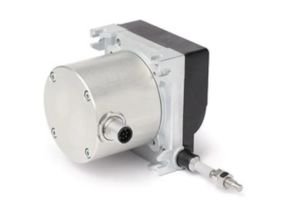Description Of Philmac – Ball Valves
The Philmac blue-handled ball valve has been servicing the Rural, Irrigation, and Plumbing industries for over 40 years.

Their distinctive blue easy-grip handle is recognized in the market as the industry standard providing users with the confidence of a strong, reliable, and robust product.
This Australian-made blue-handled ball valve is based on a simple on/off action and is quick and easy to install allowing the user full control of water distribution.
With the increasing importance of water management Philmac has expanded their range to include valves with male and female ends plus purple handle recycled water ball valves.
Benefits of Ball Valves
Fast and Easy Installation
- Multi-position Installation:
To assist with installation Philmac ball valves can work in any direction and at any angle. - BSP Inlet Threads:
The Rural and Irrigation sectors use British Standard Pipe (BSP) threads as a standard. Philmac also uses these thread types across the valve range to ensure compatibility with other threaded fittings and make installation easy.
Complete Security
- Frost Resistant:
Proven performance in frost conditions. - Easy Action:
The handle is not only easy to operate but has a positive on/off action through 90?. It is ergonomically designed to enable easy gripping. - Corrosion Resistant:
with a plastic body and components, nitrile O-rings, and all components are made from high-quality corrosion-resistant materials. - Approvals:
All blue-handled ball valves carry Standardsmark approval.
High Performance
- High pressure rating:
Ball valves are rated to a pressure of 1600 kPa (232 psi) (static shutoff) at 20? Celsius to meet the requirements of high-pressure systems. - Manufactured from advanced thermoplastic materials:
Philmac Ball valves are manufactured from lightweight high-performance thermoplastic materials, which have excellent impact, UV, and corrosion resistance. The material is non-toxic and taint-free.
Complete Coverage
- Wide range:
The range of Ball valves is comprehensive and includes sizes from ¾” to 2” (DN10 to DN50).
Operation of Ball Valves
Philmac blue-handled ball valves operate by using a ball that has a hole through the centre of it which allows water to pass through when in the open position.
To turn the valve on, the blue handle needs to be turned 90° until the blue handle sits in line with the body of the valve. To turn the valve off rotate the handle through 90° until it is at right angles to the valve body. Care should be taken when closing the valve. It should not be closed too quickly or a water hammer may result.
Philmac blue-handled ball valves are sold in the open position with the blue handle directly in line with the body. This protects the ball and ensures no scoring has occurred, therefore every valve arrives in excellent condition.
They have been designed for water to flow through in either direction and for this reason, there is no specific inlet or outlet. In some instances, it may be appropriate to mark the direction of water flow where it may not be obvious in which direction the water flows.
Installation of Ball Valve
- Apply PTFE tape or approved sealant to the male thread. Sufficient tape needs to be applied to ensure a watertight seal.
- Screw on to a male or female thread by hand until firm.
- Using a pipe wrench or multi grips on the end caps only, further screw the ball valve until tight. Where necessary, ensure the thread is held stationary to avoid it from moving. Do not use a pipe wrenches or multi grips on the body of the valve.
Source: philmac.com.au
Read more articles:
- MarelliMotori Series Motors Marine
- Philmac – Rural Tapping Saddles
- Philmac – Rural Fittings
- MarelliMotori Oil & Gas
- Marelli Motori D5H – D5L Series for Oil & Gas





